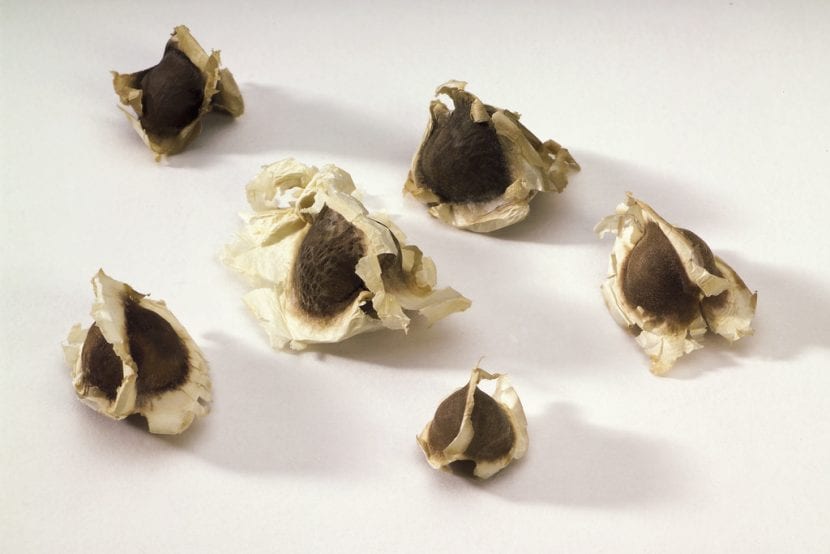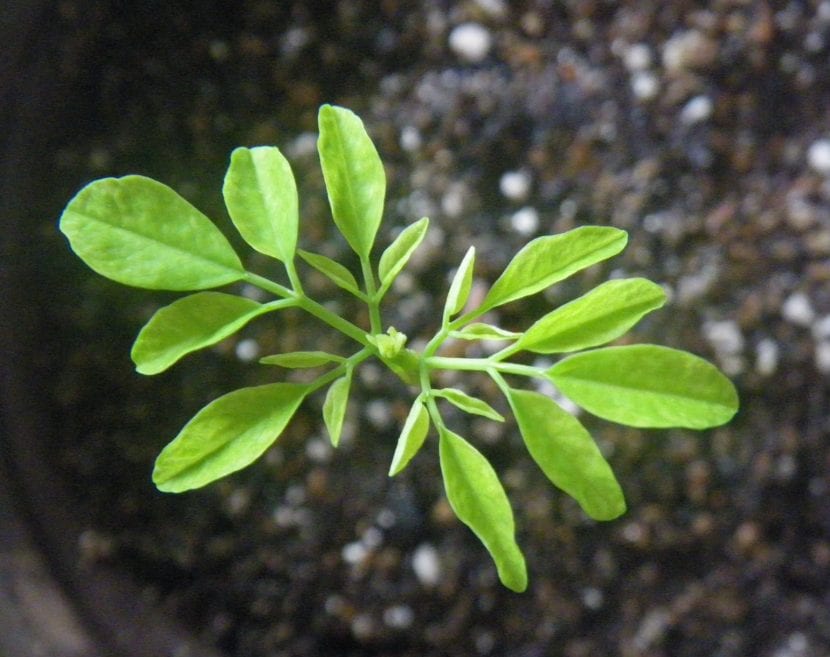
Do you want to know how to grow moringa at home? This is a tropical tree of Indian origin, well known for its high content of vitamins (A, C, B, E and K) and for its source of minerals, among which are calcium, iron, phosphorus and magnesium . Therefore, it has numerous benefits for human health, since it can be used to treat anemia, bronchitis, heart disease, diabetes, hypertension or even as a complementary treatment for cancer.
And if all this seems little to you, its growth rate is quite fast, which means that, if the conditions are suitable and there is no frost, in a couple of years you can have a beautiful garden tree. Discover how to get seeds to germinate and thrive.
When to sow moringa seeds?
Moringa, whose scientific name is Moringa oleifera, is a tree that grows up to 10 meters high in the tropical jungles of India, where temperatures are always between 22 and 35ºC. Therefore, it is a plant that can be grown outside only in hot climates; even so, if very brief and specific frosts of up to -1ºC occur in our area, it can also adapt without problems.
Knowing this, we will acquire the seeds in spring, since this way the plant will have at least 8 months to be able to grow and gain strength for the winter.
How to get them to germinate?

Image - Scented leaves
If we want to obtain a high germination percentage, we have to do the following:
- First, we will introduce the seeds in a glass of water for 24 hours.
- Then, we fill pots of about 8,5cm in diameter with universal growing substrate mixed with 30% perlite. and we water it.
- Now, we place one seed per pot, in the center, and cover it with a 1cm layer of substrate.
- Then, we add sulfur or copper to prevent the appearance of fungi, and we water again.
- Finally, we place the pots outside, in full sun, and we water them so that the substrate does not lose moisture.
After about a month, the first seedlings will germinate. But you have to leave them in those pots until the roots come out of the drainage holes. When that happens, we will have to move them to larger containers or to the garden.
Good planting! 🙂
Thank you! I'll wait for the roots to grow out.
Hello Lola.
Yes, it is the best so that you can overcome the transplant well.
Greetings.
Good day. I sow moringa seeds and my plants are very beautiful. I ask: how big must it grow to be able to harvest the leaves?
Hello Hector.
Great that you managed to germinate Moringa seeds. Enjoy them a lot, they grow quite fast 🙂
Regarding your question, the plant must be at least two-three meters high.
Regards!
Hola!
I'm going to plant moringa seeds, I have a question, how often should they be exposed to the sun and how often should I water them?
Thank you.
Hi Stephany.
The seedbed must be placed in direct sunlight from the first day. And as for irrigation, it depends on the weather, but it is important that the soil does not dry out completely.
Greetings.
Good day.
I planted the moringa, after germination it grew about 20 cm and the leaves started to yellow and fall off. The new leaves grow and as soon as the young ones dry up and fall off.
The substrate does not get wet or dry.
Can you advise me how to revive my moringa?
good, thank you
Hello Roman.
I recommend treating them with powdered copper, which is a natural fungicide. When trees are so young they are very vulnerable to fungi.
You have to water when you see that the earth begins to be dry for everything; that is, not just from above. For this, the ideal is to use a humidity meter, which when introduced, will indicate almost instantly if the soil is wet or dry.
Greetings.
I also do it indoors and everything is going very well.
Hi Rainer.
Yes, it can go well, although we recommend sowing outdoors so that the sun shines from day one.
Thanks for your comment! Greetings.